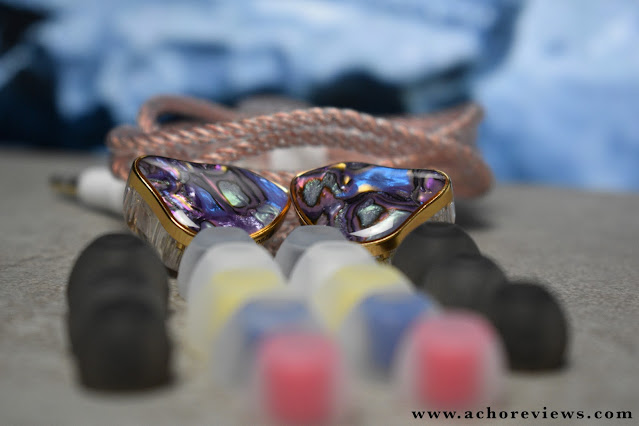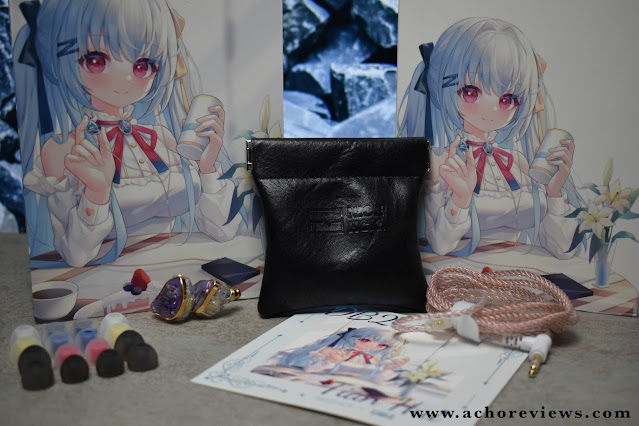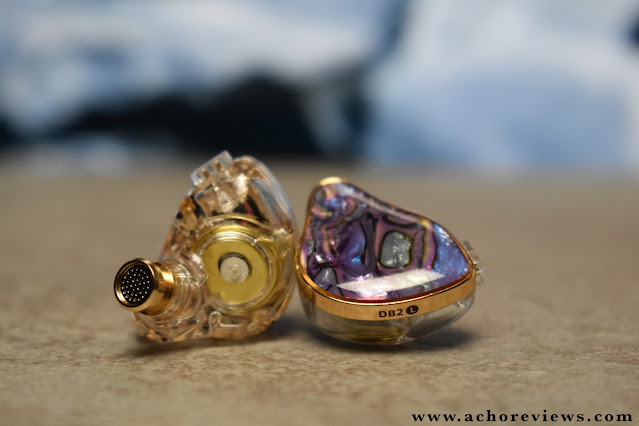- Get link
- X
- Other Apps
English | Español
TLDR version on YouTube: TDLR - NiceHCK DB2
I recently reviewed the NiceHCK F1 Pro, a set of planar IEMs that I found very impressive. Along with the F1 Pro, NiceHCK also sent me the IEMs I will be reviewing today, the DB2.
As with the other model, there have been no requests from NiceHCK and I will do my best to be as unbiased as possible.
You can find the official page for the DB2 here: NiceHCK DB2 - Official Store Aliexpress
As usual, this is a non-affiliate link.
To avoid being repetitive in my reviews, you can find all the info about how I create the reviews, equipment used, how I receive the products and how to interpret my reviews by visiting: About my reviews
Intro…
While the F1 Pro is a set of planar IEMs that sits around the 100€ mark, the DB2 are a very budget oriented set that opts for a single DD paired with a single BA driver. Coming in at just over 20€, there is no doubt that they are well inside what I consider ultra-budget (sub 50€). But being cheap does not necessarily make them a good option, as we know, there are many alternatives at a similar price point and some of them are very impressive.
So, can the DB2 make a space for itself in the bang for buck range? That is what I set about finding out.
Presentation…
It’s been a while since I received a box with an anime girl on it, something that is the main focus of the outer packaging of the DB2. Personally I don’t have any interest in anime nor does it offend me, so I am not really bothered one way or the other. I do prefer more traditional aesthetics on the box but for 20€, that is definitely the last thing I am going to worry about.
The back of the box lists the specs of the IEMs, both in Chinese and English, even to the point of the diaphragm materials used.
Sliding the internal box out of the outer sleeve, we are greeted with exactly the same image as on the outer cover, so, if you like anime, you will be twice as happy. Opening the box reveals a decorative card that also shows the same image, both on the front and the back, so now you can be four times as happy 🙂
As far as contents, we get the IEMs, the cable, a velcro cable tie, a small storage pouch and 8 sets of silicone tips, which is nice in such a budget offering.
Build and aesthetics…
The IEMs feature plastic shells which are transparent on the inside. On the faceplate we find a kind of marble design which is surrounded by a gold coloured aluminium strip. Although I am not a huge fan of the aesthetics, they are at least not simple dull plastic shells, which is again appreciated at this price point.
The IEMs are lightweight and the shape is fairly generic. I found them to be very comfortable even for long sessions, with not fatigue building up due to design or weight.
The included cable is also fairly generic, with plastic hardware and a simple twist. It is pink however, so it’s not just a generic black or white cable. I can’t say the cable is amazing but it does its job and it is lightweight, so no complaints at the price.
Sound…
All tracks mentioned are clickable links that allow you to open the reference track in the streaming service of your choice (YouTube, Tidal, Qobuz, Spotify, etc.)
This is always the important part but when we have a set of IEMs costing 20€, that is pretty well presented with a decent amount of accessories, it is even more interesting to see how much was left over for the sound quality. I have to say that I was pleasantly surprised but let’s not get ahead of ourselves and take the usual steps.
First, let’s take a look at the graph in comparison to my usual preference target for reference:
Starting off with subbass and the usual “Chameleon”, I honestly expected it to perform worse. There is a nice rumble that is not too overpowering and, although it is not the best subbass I have heard, it stays under control and does not seem to lose focus.
With “No Sanctuary Here” we get a similar experience, enough in the sub ranges for it to be considered fun but not fatiguing. I didn’t get the feeling that the subbass was taking over the sound yet it certainly makes itself noticed.
Moving into the midbass and using my midbass fatigue test track which is “Crazy”, here I did feel that the midbass could be a little overpowering for my personal tastes. It isn’t overpowering to the point of being fatiguing but I did find myself wishing it had a little less reverb on the low end of the guitar. The vocals did balance out well though and I can say I enjoyed the track, I just preferred the vocal parts to the instrumental sections.
With “Elephants on Ice Skates” I did get the feeling that the bass wasn’t quite as controlled as it could be, although it was far from being terrible. When the track got busier, I found that the midbass lost some of the clarity but, again, far from terrible.
Into the mids we do find a bit of a recess throughout the middle section that can have an effect that is more or less noticeable depending on the music selected. With “Elephants on Ice Skates” it was far more noticeable throughout the busy sections whereas with something like “Don’t Start Now” it didn’t really stand out as much.
As we get to the upper mids, this is where things can come across as unnatural. There is a lot of presence in the form of peaks at 2kHz and 3.5kHz which make vocals cut through easily, balancing out that bass that I spoke about a moment, yet they can be a little thin and harsh on occasions. For example, “Don’t Start Now” sounds a little harsh and fragile in these regions.
With “Still D.R.E”, the snare and melodic notes sound harsh and strained, even more than they usually do, with things seemingly a little distorted in this region and even making the the vocals take a step back behind the upper mids of the instruments.
Sibilance is tamed fairly well, at least with my usual “Hope Is A Dangerous Thing” and “Code Cool” tests. I would say that Patricia Barber is around a -2 on my non-scientific -12 to +12 sibilance scale.
This is due to a rather large drop in presence once we get over that 3.5kHz mark which really doesn’t come back, at least not properly, all the way up into the treble ranges. In fact, the treble does have a few peaks that give it a bit of presence in those upper ranges but in general it is pretty rolled off in the treble. This can give a sensation of lacking air on many tracks and leaves the focus on those upper mid peaks.
As far as soundstage, they do a pretty decent job. They are not huge but I do think that they are a little above average for a set of IEMs. Using “La Luna”, there is a decent sense of space between instruments and a few Dr.Chesky tests were pretty positive in giving a sensation of space.
Conclusion…
Picking faults with the DB2 would be the overly present 2kHz and 3.5kHz peaks, followed by the rolled off upper treble. But to be fair, for a set of 20€ IEMs, these are by no means bad. I have enjoyed listening to them.
I wouldn’t say they are the best set available in their price range but I don’t think people would regret buying them either, unless they are sensitive to those peaks (like I would be if they were at 5kHz).
The bass is surprisingly fun and well controlled. There are times, in busy tracks, where the midbass can feel a little congested and the dip in the mids makes itself present but that does depend a lot on the music being played. Not all busy tracks show this.
In general, I think the DB2 are a fun set of IEMs that are easily worth their asking price.
All FR measurements of IEMs can be viewed and compared on achoreviews.squig.link
All isolation measurements of IEMs can be found on achoreviews.squig.link/isolation
To comment or contact, visit any of the following social media platforms:





.png)

